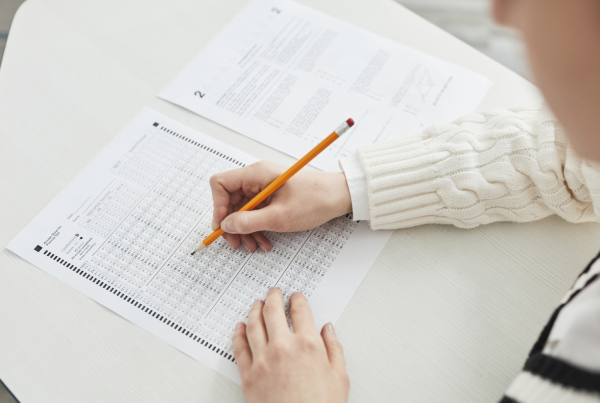By Dan Marlin
On Tuesday, March 7, most high school juniors who attend a public school in Wisconsin (and some who attend private schools) will take the ACT. While the statewide ACT has the same format as it would on any national test date (same sections, structure, scoring, etc.), there are some differences. The timing of the test, between the February and April national test dates, can also impact how students think about and prepare for future exams.
What are the differences?
The writing section: Students are required to take the ACT writing section on the in-school exam, which comes after the four main sections (English, Math, Reading and Science). However, with very few exceptions, colleges no longer require the ACT writing section, and it has no bearing whatsoever on the composite score. Students should do their best on the writing section, but not stress about it.
Proctoring: Because the in-school test is given at students’ home schools, teachers and other staff proctor the exam. While school staff are trained in how to administer the ACT, they not professional proctors. This can increase the likelihood of small but important mistakes, such as failing to give students warning when time is about to run out in a section. Therefore, students should be especially aware of the clock.
Score release: The tests given on the national test dates tend to come back within 2 or 3 weeks of the exam (and often sooner). However, scores are not released as quickly for the statewide test. For example, last year, the test took place on March 8, but scores didn’t start coming in until March 31, and even that slow turnaround was faster than in prior years. If that pattern holds this year, the April test will take place just two weeks after students receive their March scores, which is not enough time to jump back into preparation effectively. So…
What should students do between exams?
For most tests, it’s okay to take some time to recharge, wait until your scores come in, and then decide if you want to work toward another test. But for the March 7 exam, that doesn’t quite work because of the delayed reporting. It’s probably fine to relax for about a week, but then it’s time to get working again!
The best practice is often working through problems, passages and sections from real ACTs. One primary resource we use is “the red book” put out by the ACT. The current edition includes six practice tests that were given as ACTs at some point in the recent past. For my students who plan to finish their prep with me in March but also might take the April exam, I advise working on at least two sections per week between the two exams. This practice need not be onerous or time-consuming; in fact, if students want to work on their timing, by definition they can’t take more than 45 minutes on English, 60 minutes on Math, 35 minutes on Reading, and 35 minutes on Science. Of course, reading (lowercase r) is always helpful, so reading for pleasure and regular schoolwork that involves reading can be good preparation, too. For students working with Galin, our test prep tutors can provide ideas about what to work on.
Why should students care about the April test at all?
Superscores: An added benefit of preparing for another exam is that the ACT releases “superscores.” Superscores take students’ best individual sections and average them into a new composite score, so taking multiple ACTs ends up being beneficial for most students. Most colleges will accept superscores, but not all do! Students are advised to check with their counselors and on individual colleges’ websites for the most up-to-date policies about superscores.
Test timing: The timing of the April ACT might be better for many students than the next ACT, which takes place in mid-June. The end of the school year can be hectic with finals, sports and vacations, whereas mid-April might be a relatively calmer period.
One more thing: If a student signs up for the April exam (registration deadline is March 10), but gets the score they want in March, they do not have to take the April test. Nothing happens if they don’t show up, aside from losing the money paid for the registration fee.
How should students prepare for March 7?
Despite all of these considerations, preparation for the in-school test itself is largely the same as it would be for a national test day. I always tell my students the following:
- Make sure your calculator is charged or has fresh batteries.
- Get a good night’s sleep not just Monday night, but also Sunday night. You might be a little nervous or jittery the night before the test, so having some sleep banked can be helpful for your focus.
- Treat Tuesday, March 7 as any normal day. Don’t eat a gigantic breakfast or drink a bunch of coffee if that’s not something you typically do.
- Triple-check the test’s start time and give yourself plenty of time to get to the test location. We’ve had students miss exams that begin at a different time than our practice tests at Galin.
The preparation period between the March and April ACT tests is condensed but crucial. Students should seek to maximize their prep in between the two tests, as it is often beneficial to take both.
Good luck to everyone next week!




